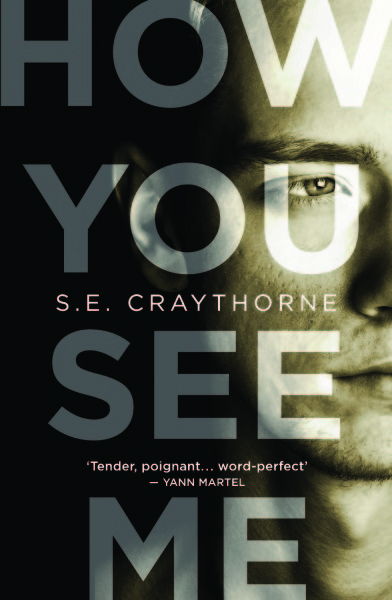I never intended to write How You See Me as an epistolary novel. In fact, I tried very hard not to. In a series of miserable exercises, I struggled to fit my story to a traditional third-person narrative, a dual narrative in the first person, or really into any other shape. Needless to say, it didn't work.

From my experience, a story, once you have one, cannot be forced to shape or form, but rather dictates it. And this story had to be told in letters. It was somewhat to my surprise that I enjoyed working with the epistolary form.
As a nervous first-time novelist, it was reassuring to have a method of writing which placed responsibility so firmly in my protagonist’s hands. It wouldn't be me writing the letters, after all, it would be Daniel Laird. He even signs them, for goodness sake.
As the story developed, it became clear to me that Daniel was not all he seemed and the epistolary form again displayed its strengths. The letters in How You See Me are written to four people: Alice (Daniel’s girlfriend), Mab (his sister), Freya (his niece) and Aubrey (his boss). By denying the reader any of the recipients’ replies, they have to put together a picture of Daniel based only on his accounts of himself. The epistolary format enabled me to vary style and content depending on whom Daniel was writing to. This – I hope – helps to keep the reader engaged in the puzzle of Daniel’s true nature, as well as keeping the narrative fresh.

Having decided on the epistolary form, I had a wealth of inspiring novels to draw upon. The classics, of course, love a letter, but there are contemporary examples too. We often forget, for example, Lionel Shriver’s We Need To Talk About Kevin is a novel in letters. It’s a masterclass in how to use letters to depict uncomfortable truths and an unreliable narrator. If you want an epistolary novel so beautiful it will remind you how to read and read slowly, there is Dear Thief by Samantha Harvey. Experimentation with the form can be found in Where'd You Go, Bernadette by Maria Semple, where Semple uses email, MSN and straight prose to tell her story. Most recently, Sarah Perry made exquisite use of letters in The Essex Serpent to give an insight into the true nature of her characters. They breathe pure charm into an already brilliant novel.
I could go on.
Essentially, the success of the epistolary form must stem from curiousity. And by calling it ‘curiousity’ I’m being polite. Who doesn’t relish the chance to read someone else’s letters? I certainly do. We love to probe the private spaces letters represent. And we’d hate the idea of anyone doing it to us. There lies the frisson that will keep your readers reading. And that, after all, is what we all want.
S.E. (Sally) Craythorne is a graduate of the Creative Writing MA at the University of East Anglia. An extract from her debut novel, How You See Me, was shortlisted for the 2013 Myriad First Drafts Competition and longlisted for Mslexia‘s Women’s Novel Competition and published by Myriad in 2015.
Sally has worked as a bookseller, journalist, artist’s model, English teacher and librarian. She lives in Norwich and is currently working on her second novel. Visit the author's page or follow her on Twitter.
Comments